There are 4 main results we want to achieve by the end of the rotation:
Operate for 12 days according to the MARS-V analog station training program. Individually jot down all comments and improvements.
Make 3 freeze-dried recipes everyday for 2 weeks. Individually jot down all comments and improvements.
Take the MARS-V analog Mars suit and MDRS suit on every EVA. Individually jot down all comments and improvements.
Learn all that we can from MDRS.
Mission Plan – November 12th
Roger Gilbertson – Commander
Donald Jacques – Executive Officer, Crew Engineer
Liz Cole – Health & Safety Officer, Crew Journalist
Guillaume Gégo – Crew Scientist
Scott Beibin – Crew Astronomer, Artist In Residence
Hugo Saugier – Documentary Filmmaker
INTRODUCTION
The six person crew of MDRS 286 came from individual applicants and invited people. We represent a range of cultures, talents, experiences, backgrounds, and varied interests.
We plan to perform a good variety of projects; hard science of bacteria growth helpful for creating closed-loop life support systems, conducting advanced extended range EVA capabilities, technology demonstrations using in situ resources, and various artforms including music performance, videography, photography, and storytelling.
Additionally, we plan to host two visiting photographers and have invited them to remain “in sim” with us as much as physically possible. An educational outreach may be performed via a live link to science museums and/or Mars Society groups in Europe.
OUR PROJECTS
PROJECT 1: CO2 Fixation by Purple Bacteria for Space Food Production: A Comparison of Three Electron Sources & Terrestrial Applications.
Lead: Guillaume Gégo
Background: Master degree in Biochemistry, Molecular and Cellular Biology at UMONS, BE.
Process: The CO2PROT project aims to develop an efficient, sustainable and reliable Bacteriological Life Support System for manned space exploration using purple bacteria.
Purple bacteria are known for their metabolic heterogeneity, which allows for different compounds, like wastes or in situ resources, to be envisaged as substrates.
Among these, carbon dioxide remediation is by far the most attractive option, as it traps waste into potentially edible biomass. With the carbon source defined, multiple electron sources are available, but no comparative data has ever been accumulated to rule out the better option, would it be for space exploration or terrestrial applications.
In this study, three main metabolisms leading to CO2 fixation will be compared by studying the growth of purple bacteria model Rhodospirillum rubrum in:
Photoheterotrophy: High-electron-content volatile fatty acids (Butyrate/Valerate).
Photoautohydrogenotrophy: Hydrogen.
Photoautoelectrotrophy: Electron flux (current).
The bacteria will be grown inside low-cost bag photobioreactors to assess the possibility of mass-production in altered gravity, while reducing costs of terrestrial downfalls of the study. Analog missions are therefore ideal platforms to test if such installations are feasible on other planets. Since photoheterotrophy was already studied in another analog (AATC, Poland), photoautohydrogenotrophy will be tested at MDRS as a follow-up.
Deliverable: Master thesis mission report.
PROJECT 2: Performing Extended Extra-Vehicular Activities Using a Mobile Analog Space Habitat
Lead: Donald Jacques
Background: EVA’s at MDRS are constrained by the range of the rovers, time necessary to recharge the batteries, as well as the physical strain on participating crew members, exposed to the elements during travel, much less being able to replenish food, air, water during an extended EVA.
Process: For our MDRS Mission 286, we wish to include the MASH (Mobile Analog Space Habitat) in the mission simulation, for the purpose of an Extended Excursion EVA. The MASH vehicle is a former school bus converted into a mobile habitat with an integrated Ecological Life Support system including heating, cooling, food and water supply, and waste handling. The habitat and life support are powered by an on board solar array with battery backup, and can operate overnight as a shelter if the need arises. These qualities closely approximate the features that NASA is including in the SEV. Our purpose in incorporating the MASH is to assess and evaluate the Extended Excursion EVA for long duration exploration and science study as an adjunct to the science study of the EVA.
Deliverable: Final report, photos & video.
PROJECT 3: Creating High Resolution Interactive Digital Assets of MDRS and Local Geological Sites Using 3D Scanning techniques.
Lead: Scott Beibin
Background: LiDAR, Photogrammetry, Neural Radance Fields (NeRFs) and other techniques can be used for accurately creating detailed high resolution digital twins that can be utilized for remote study of objects and landscapes. This can include examining equipment that has undergone stresses (rocket motors, fuel tanks, protective shielding) and looking at geological features. The advantage of having high resolution scans is that there can be coordination of examinations between explorers on Mars as well as remote support teams on Earth and elsewhere. Currently I have been using a variety of LiDAR devices for my own archaeological explorations.
Process: This project proposes using multiple scanners and techniques to create digital twins of the equipment at the station as well as the station itself. Local geological features will also be scanned during EVAs.
Deliverable: 3D scans of varying resolutions will be created in order to be used in the MARS VR Project.
PROJECT 4: Producing Functional Artifacts Using Local Clay Resources and a 3D Extrusion Printer
Lead: Scott Beibin
Background: This project proposes collecting local clay and gypsum from the vicinity of MDRS and processing it into 3D printed objects intended for either durability or ecologically minded disposability. I have designed a 3D plotter/printer that will be used for this project (Mandelbot Ecotech SURFA2 Goostruder).
Process: Dry clay and gypsum will be gathered from geotagged local deposits during EVAs. The aggregate materials will be sifted from and examined for their various pozzolan qualities using a microscope as well as other tests. The materials will be reconstituted then printed using a 3D printer specifically designed for printing objects using clay, pastes and colloids.
Deliverable: A variety of 3D printed objects will be created either from digital twin LiDAR scans or creations within CAD software. This will include clay and/or gypsum planters for the Green Hab as well as molds for Project 5.
PROJECT 5: Using Local Gypsum Resources to Produce Molds for Metal Casting
Lead: Roger Gilbertson
Background: Residents of Mars will take advantage of local resources as much as possible. After fulfilling their original purposes, metal components of spaceships and other equipment brought from Earth can be melted and reformed into other useful items. The age-old techniques of mold making and metal casting will find new uses on Mars.
Process: This project proposes collecting local gypsum from the vicinity of MDRS, processing it into plaster (as demonstrated by previous MDRS missions), and using it to make molds for metal casting. The “original” form can be designed and 3D printed at MDRS, then used to make negative molds in plaster. Using low-temperature, non-toxic bismuth metal, we will demonstrate casting of small, complex metal components.
Deliverable: 3D original, plaster molds, metal castings, final assembled metal item, photos and videos.
PROJECT 6: Mars Academy – A Documentary Film About ESA Scientist Claude Chipaux and the Past, Present and Future of Mars Life Sciences
Lead: Hugo Saugier
Background: When my grandfather Claude died in 2010, I discovered that he was the founder of a research program of the European Space Agency, dedicated to the question of the autonomy of the crews of long journeys in space. I then understood that the popular figure of the high-tech astronaut is gradually changing, being replaced by a new kind of galactic explorers: astronaut-farmers. For a while, I didn’t know what to do with such a heritage, until I recently decided to write a movie about Mars dreamers in which my grandfather would be one of the characters.
Process: I will film the crew during its daily life in MDRS and do a sort of a travelog which will be useful for the writing of the movie. I want to collect the reality of each one’s experience. Collective moments, organization of the place, maintenance, etc, will be interesting moments to be filmed. As we’ll be simulating, I may want to add a bit of simulation by fictionalizing some scenes (for example during an EVA, doing an emergency situation). I want to show how we imagine living on Mars is. I will do individual interviews with each that wants, more in the shape of confessionals.
Deliverable: Documentary movie.
PROJECT 7: Simulating Acoustics of Mars for an Outdoor Martian Music Performance
Lead: Scott Beibin
Background: Using recordings from the electret microphone mounted on the Supercam on the Perseverance Rover a ground truth for the modeling of acoustic processes in the environment on Mars was characterized for the first time in the audible range and beyond (20 Hz to 50 kHz). SuperCam’s microphone recorded air pressure fluctuations from 20 Hz to 12.5 kHz or 50 kHz, at sampling rates of 25 kHz or 100 kHz. Recordings of the Ingenuity rotorcraft and laser-induced sparks were used as reference sources of sound.
It was discovered that:
– The acoustic impedance of the martian atmosphere results in approximately 20 dB weaker sounds on Mars than on Earth – if produced by the same source.
– The acoustic attenuation range on Mars was discovered to be roughly between 20Hz to 20kHz.
– Two different speeds of sound were observed on Mars. Low-pitched sounds travel at about 537 mph (240 meters per second), while higher-pitched sounds move at 559 mph (250 meters per second) because of the low-pressure 96 percent CO2-dominated atmosphere (compared to 0.04 percent CO2 on Earth).
– The atmospheric pressure on Mars is about 0.6 kPa (170 times lower than on Earth).
Process: Using the data that was published in Journal Nature [https://www.nature.com/articles/s41586-022-04679-0] and on the Nasa website [https://mars.nasa.gov/mars2020/participate/sounds] I collaborated with audio engineer John Knott to create a filter in a DAW (Digital Audio Workstation) that accurately simulates the way sound travels on Mars.
I composed two Ptelepathetique tracks to be performed on synthesizer at Barrainca Butte while on an EVA. The compositions were made to optimize for the way sound travels on Mars. In addition to the musical compositions, I will be exploring optimal frequency ranges that could be used for safety alerts and alarms for humans operating in a Martian environment.
Deliverable: High quality audio and video recordings of Ptelepathetique tracks will be recorded that compare the way the tracks will sound on Earth and Mars. These will be posted on social media accompanied by a story of the process.
PROJECT 8: Documenting the MDRS Mission 286 Adventure in Words and Images
Lead: Liz Cole
Background: Life in the constraints of the Martian environment requires a shift to more sustainable life support systems such as vegan and plant based food production and building with local resources. Crew 286 of MDRS is developing various technologies to support life on Mars while addressing Earth’s most pressing environmental problems. Documenting the crew conducting their research, EVAs and life throughout the course of the mission will highlight the work of researchers at MDRS.
Process: I will document the research and activities of the crew throughout the mission. I will weave the narrative of each sol in the daily journalist reports, including images and video captured by myself and other crew members. And I will write the final media reports for the mission. I will bring a Sony A7iii camera with standard and telephoto lenses for photo and video. Schedule allowing, I will conduct video interviews with crew members where they tell the story of their work. Post mission, I will compile a longer written piece exploring and explaining the experience of the mission and submit it for publication.
Deliverable: Daily Journalist reports, web postings for Mars Society, images, video.
PROJECT 9: Evaluating Performance of Biological Life Support Components Installed within the Mobile Analog Space Habitat
Lead: Donald Jacques
Background: A Biological Regenerative Life Support System needs to provide not only environmental support for a team, but a variety of food, water processing, and waste processing. The Mobile Analog Space Habitat is equipped with a min-farm containing many species that interact in order to process a circular economy of nutrients, water, wastes, and air.
Process: Measurements of environmental conditions, populations, general health, inputs to and outputs from each species will be recorded during the 14-day mission at intervals of morning, noon, and evening.
Positive results would include egg production from the quail, new fingerlings in the fish tank, measurable growth of the crop species, mealworms, red worms, and measurable output of oxygen from algae tubes.
Deliverable: Final report, photos & video.
ADDITIONAL / OPTIONS
Participation by some crew members in the research study conducted by Andres Käosaar into “teamwork in isolated, confined, and extreme environments.”
Photography of night sky, using time lapse, wide lens, and telescopic imaging.
Videography of Mars-like surface environments and astronaut activities.
Gather notes for design of a Mars-Earth Situational Awareness (MESA) informational website.
Hosting of two guest New York Times photojournalists (for 4 nights).
Possible educational link-up Belgian science center and Mars Society of France.
Thanksgiving on Mars.
Crew 286 Crew biographies, photos and mission patch 12Nov2023
[title
Crew biographies, photos and mission patch – November 12th]
BIO – Roger G. Gilbertson
PAST
I studied Aerospace at USC, switched to robotics and film/video at Hampshire College. Joined a Silicon Valley startup, then started an internet and robotics business (Mondo-tronics and RobotStore.com) with friends. We contributed a tiny, unique “Muscle Wire” component to the Mars Pathfinder Sojourner Rover. After selling the business to a key supplier, I became the first full time “media guy” at SpaceX, sharing the adventure starting with Falcon 1 Flight 3, through Dragon arriving at the ISS, and the first successful reentry of a Falcon 9 first stage (2007-2014).
Have since worked on various documentary films, new articles, and non-fiction and fiction stories. Some of my research led to a TEDx talk <https://www.youtube.com/watch?v=_HytJn6uaRk> now with more than 1.3 million views.
PRESENT
I’m married, father of four kids now aged 21 to 34. (When they were younger, I got to take each of them to Parent-Child Space Camp.) I live in Los Angeles with my wife, and in March 2023 we returned from a month exploring the history and mysteries of Egypt and Jordan.
MISSION
For our upcoming mission I’m eager to explore the range of projects we have lined up—from the science of life-supporting bacteria, to the sounds of music on the Martian surface.
MARS
I’ve been a huge fan of space exploration and Mars for as long as I can remember. As a Mars Society “Mars Ambassador” I have been developing a series of talks / short videos with the theme “What I Love Most About Living on Mars.” The presentations are given by a Mars settler from the near future when there are around 10,000 humans on the Red Planet. The goal is to make Mars a “real place” in people’s minds, especially today’s youngsters who will lead our settlement efforts.
BIO – Donald Jacques
PAST
I have enjoyed multiple careers over the years: USAF, Ballroom Dance Teacher, Author of three novels, Electrician, Commercial Maintenance. I even had the auspicious opportunity to portray Duckie, the Maintenance Chief for Luna City in an Arizona State University theater production. For the past 10 years I have served as Chief Scientist of EarthSeed, Inc researching Compact Biological Life Support. (www.EarthSeed.Space)
The culmination of the research is the Mobile Analog Space Habitat (MASH), a 40 ft mobile habitat built on a school bus as a living space for one person. It was built to develop the baselines, and foundation for a scalable biological life support system for Earth and Space. The MASH contains kitchen and living quarters, plus a small workshop, and mini-farm (fishpond, garden, chicken coop, algae PBRs, composting toilet, and distillation gray-water recovery).
In December 2022, I retired from my handyman business after 20 years to accept a Site Manager position at MDRS from Jan-Mar of 2023. As Crew Engineer, I come with a solid foundation in the systems that will sustain us during our mission.
I have added an EarthSeed Brochure-MASH.pdf to the group’s shared folder.
PRESENT
My home base is the home of one of my daughters in central Utah. I just completed my 2nd cross-country, shake-out cruise in the MASH. My first stop was the Analog Astronaut Conference held at Biosphere2 near Tucson, AZ where I presented “The Application of Integrated Biological Life Support components in the Analog.”
During the rest of the journey, I visited the Tucson Air Museum, Houston Space Center, had the opportunity to take a swamp tour in Louisiana, helped my friend set up her RV in Waxau, North Carolina, then a two week visit with another daughter and kids in Kentucky, and finally back to Utah.
I hope to complete needed repairs and upgrades in time for our mission in November.
MISSION
Like a few of you, this will be my first opportunity to be part of an analog crew, and I am looking forward to serving, and getting to know you all. It is my hope to bring a prototype of our Biological Life Support unit for testing in the hab environment during the mission.
SPACE AND… OUT THERE
I can remember being glued to the tv as a young boy watching the first lunar landing, and the excitement of that event has been at my core for these many decades. My dream is not to just get… somewhere. My dream is to spend time on each of the following destinations: Moon, Mars, Calypso, Ganymede, and Titan. SpaceX has given us reusable rockets, and made Mars more reachable than ever. It is my belief that we will achieve some form of a star-drive by the time we reach Titan. I want to be on that ship to the stars.
BIO – Elizabeth Jane Cole
PAST
I co-founded a speakers bureau that represents leading thinkers, scientists and artists for public appearances in academic, institutional and experiential arts oriented venues, film, publishing, advisory services and more worldwide (eviltwinbooking.org). Occasionally covered art, technology and robotics for WIRED Magazine, and produced a podcast for the Love and Radio series.
PRESENT
Manage Evil Twin Booking, a speakers bureau that advances new ideas while transforming culture.
Media strategy, concept development and creative consulting for live events and organizations. With collaborators and like-minded organizations, we sometimes develop the concept and scripts and provide media strategy for live events and actions that draw media attention to critical issues, and that have occasionally led to policy changes in domestic and international law.
I’m driven by curiosity to video document the Starship Integrated Flight Test and capture scans of antiquities in upper and lower Egypt with Scott Beibin.
MISSION
I am excited to join MDRS crew 286 as Crew Journalist.
As part of my involvement, I will be documenting the crew’s experiences throughout the analog mission, for the purpose of highlighting MDRS as a resource for researchers and aspiring astronauts alike, to inspire future analog astronauts to stay curious and keep exploring, and inspiring and informing the public about analog astronauts, exploring Mars, and human spaceflight in general. I’m excited to assist with the Green Hab to explore growing edible crops to support physical fitness on future long term space travel.
BIO – Guillaume Gégo
PAST
In a quest to quench my thirst for space-related biological endeavors, as well as a never-ending ambition to become an astronaut, I stumbled upon European Space Agency’s “MELiSSA projet” (Micro-Ecological Life Support System Alternative) during a public conference given 5 years ago by Dr. Baptiste Leroy at the University of Mons while working on a school project.
That steppingstone was what convinced me to continue my projects during a "second last year of secondary school" at SFDCI in Smiths Falls, ON, Canada. While having automotive and programming classes, I worked on the spiritual child of my old project and presented it at the St-Lawrence Regional Science Fair (https://www.owensoundsuntimes.com/news/local-news/gallery-onward-to-mars-by-way-of-fredericton/wcm/b367933a-394f-427b-9a54-a0f1814ed243/amp). To my delight, I got selected to go to the Canada-Wide Science Fair (CWSF 2019) to present my project, which was called "Growing Plants on Mars: A Computer Simulation" (https://www.insideottawavalley.com/news-story/9339320-smiths-falls-high-school-student-headed-to-canada-wide-science-fair-for-out-of-this-world-simulation/).
When I came back to Belgium, I pursued my education at UMons as a biologist while waiting to seize the chance to work on space-related projects. I worked over the summer on ESA’s Astroplant at the Proteomics and Microbiology lab under the supervision of Dr. Ruddy Wattiez, got to teach English and Botany classes as an assistant, and started diving lessons.
PRESENT
5 years after the original MELiSSA conference, I finally managed to get a Master internship position at the MELiSSA Pilot Plant (https://www.melissafoundation.org/page/melissa-pilot-plant#:~:text=The%20MELiSSA%20Pilot%20Plant%20(MPP,in%20Universitat%20Aut%C3%B2noma%20de%20Barcelona) in Barcelona, Spain, from the 6th of February till the 6th of August 2023. I’m now two months in this beautiful endeavor and mainly focusing on these three topics:
Continuous operation of bench-scale bioreactors for urea and organic acid degradation of synthetic urine
Shake flask characterization of the bacterial consortium used in Compartment 3 of the MELiSSA loop
MATLAB + SIMULINK modeling of single-strain kinetics of C3 bacterial consortium
MISSION
I applied to many analogs this year and this will be my second in chronological order, the first one taking place in Poland’s Analog Astronaut Training Center.
The CO2PROT project I will develop during both analogs aims to assess the possibility of:
Using bacteria (L. indica, R. capsulatus…) to remove CO2 from the confined environment of the analog mission. The fixation of CO2 within the bacteria will produce high-protein novel food with other health benefits, while avoiding the loss of organic matter, and also reducing the energy required for CO2 removal.
Assess the feasibility of a bench scale photobioreactor made during the analog mission, with limited control on the axenicity of the bioreactor itself, since the analog is a “scarce” environment with less equipment compared to a fully-fledged lab.
Test out the edibility of the biomass produced if allowed by the analog’s guidelines.
UPDATE: DETAILS OF THE MASTER THESIS
Promoters (scientific-administrative co-supervision): M. Leroy & M. Wattiez
Subject: CO2 fixation by purple bacteria for the production of "Novel Food" for space exploration and terrestrial application: comparison of three electron sources.
Experiments planned:
o Study of the growth of:
o Rhodospirillum rubrum in volatile fatty acids with high electron content (Butyrate/Valerate) = photoheterotrophy. Dimension applied in analogous low-cost missions to add practical added value to the brief. Allows exploration of Novel-food applications for space exploration.
o Rhodobacter capsulatus in the presence of hydrogen = photoautohydrogenotrophy. Laboratory internship in collaboration with Siegfried Vlaeminck (UAnvers) and/or Gabriel Capson-Tojo (Université de Narbonne).
o Rhodovulum sp or Rhodopseudomonas palustris in the presence of electron flow = photoauto "electro "trophy. Laboratory collaboration with Arpita Bose (St. Louis University).
o Comparison of the interest of the three systems (qualitatively and quantitatively) on the following points:
o Biomass composition and characteristics:
o Protein composition: is it close to egg (ideal protein for humans)? Does it vary according to the electron source chosen? Analysis of free or polymerized aa (in total biomass). Via protein assay and aa analyzer.
o Pigment composition: nature via absorbance spectrum analysis (carotenoids and bacteriochlorophyll).
o Lipid composition: quantitative via kits, natural via mass spectrometry.
o Antioxidant composition.
o Additional interest: LDL cholesterol, etc…
o Study of CO2 fixation rates for the three systems, as well as the rate of assimilation of electron sources:
o Efficiency of CO2 metabolism.
o Analysis of other sources of CO2.
o Human respiration in confined spaces
o Biogas 50/50 CO2/Methane from bacterial digestion of agri-food digestate.
o Efficient use of electron source and economic/ecological interest.
o Fatty acids/Industrial molasses.
o Hydrogen.
o Electron flow.
o Justification of the use of these electron sources in the context of:
o Space exploration (CO2 remediation + novel-food).
o Feed production (livestock/pets).
o Food production (human).
o Which system is more profitable?
o Economically/ecologically/food-wise?
FUTURE
Master thesis, PhD and working around the MELiSSA technology + ESA Young graduate trainee programme.
BIO – Scott Beibin
PAST
Space exploration and aerospace engineering have both been deep passions of mine since early childhood. Early in life I picked up hobbies of model rocketry and astronomy. I would also build machines, take apart radios and generally play with electronics. Thanks to encouragement from my parents and teachers, I managed to become an early attendee of Space Camp in Huntsville AL (1984 & 1985). I believed then that I would eventually work in aerospace or the hard sciences based upon my interests, however life ended up taking me along interesting twists and turns.
My academic career focused on Anthropology and Archaeology, however I eventually quit university while I was running my punk / emo / screamo record label, Bloodlink Records. I became more deeply involved in Do-It-Yourself culture, environmental and social activism, collectives and cooperatives, built large puppets for protests, distributed free vegan food in my city, helped start a pirate radio station, and found myself co-founding the Lost Film Festival which I toured around the globe with as the host, presenter and VJ. I eventually co-founded the Evil Twin Booking Agency as a spin off project of Lost Film Fest with Elizabeth Jane Cole where we continue to participate in organizing live speaking events around the globe for a roster of amazing people. In 2009 my interest in the sciences and engineering were rekindled. I put together a new stage performance called Scientists Are The New Rockstars that gave me the impetus to start deeply researching my interests, and dove into developing eco-technologies and open source hardware – including robotic plotters and 3D printers. I also began to design 3D printable buildings intended to be constructed with natural materials – both for earth and offworld. I also began experimenting with surface mount Brain Computer Interface devices and building bicycle powered generators for off-grid electrical production.
PRESENT
Currently, my life is immersed in Liberation Ecotech based creative projects which I use to feed into my primary goal of designing ecologically sound technologies with respect to collectivism and individual freedom (I deeply believe this will be valuable to our human civilization in a changing Earth environment and settlement in Space.) I live off-grid in the city of Philadelphia. My main projects, Mandelbot Ecotech* and AncientScan** have emerged from my traveling science comedy performance I’ve done since 2009 called Groucho Fractal aka Scientists Are The New Rockstars – which features my inventions and has the goal of making STEAM education fun and accessible. I experiment with audio resonance research via my compositional music project, Ptelepathetique. I also contribute to various open source and decentralized tech projects. My multidisciplinary approach to projects has been deeply inspired by minds such as Nikola Tesla, Buckminster Fuller and Gene Roddenberry.
[* Mandelbot Ecotech has produced the Mandelbot SURFA (Scalable Universal Robotic Frame Assembly) and Mandelbot HAB, a 3D ecotecture printer for natural building projects. Other projects within the framework include flying electric vehicles and atmospheric water generation units.]
[** Ancientscan, uses LiDAR, audio recording and spectral analysis with the purpose of reverse engineering the technological feats of past civilizations. ]
MISSION
During MDRS mission 286 I will conduct research on several fronts.
As the acting Crew Astronomer I will be responsible for operating the robotic telescope and doing astrophotography in addition to my crewmates, Roger Gilbertson and Liz Cole.
I plan to conduct research on the behavior of sound in a low air pressure and Carbon Dioxide rich Martian atmosphere. To do this I will be using a custom built software filter that I collaborated on the design of with professional audio engineer, John Knott. The parameters for the filter were sourced from the paper published by NASA in Journal Nature which revealed the findings about acoustics on Mars based upon data gathered by the Perseverance Rover. My research will culminate in a Ptelepathetique concert performed in a valley at sunset during an EVA in which the sound of Mars will be simulated and recorded through our filter. Simultaneously, an unfiltered version will be recorded in order to compare the sounds later. The sounds will be recorded both within the software and using precision microphones that will serve various recording purposes – including the Zylia ZM-1 which will be used to record ambisonically. I will produce a video to talk about the process which will be released on various social media platforms.
In addition to experiments with sound, I will be utilizing my invention, the Mandelbot SURFA2 to print objects using locally found clay and gypsum found in the vicinity of the MDRS. I will also mke vegan snacks for the crew.
I plan to scan the geographic surroundings of MDRS using precision LiDAR, as well as recording sounds by utilizing various microphones and a Geophone – with the goal of contributing data to the ongoing MDRS VR project.
MARS (OR BUST!)
My intense fascination with Mars started as a small child. I remember being intrigued by the photos that came back from the Viking 1 mission. I kept a newspaper clipping of the desolate Mars landscape in my bedroom which fueled my imagination and desire to one day visit the Red Planet. Over the years I would keep up with developments from NASA and other space agencies and wondered if I would be able to visit Mars in my lifetime even though I had not taken the traditional path toward working in aerospace.
While touring with my various projects, I was lucky enough to have friends who worked in the labs at Carnegie Mellon University where I would visit full scale models and prototypes of Mars Rovers Spirit and Opportunity. I was also able to observe the Curiosity and Perseverance Rovers while they were being assembled at JPL. I’ve closely followed development of the Mars-bound SpaceX Starship program and have attended several of the rocket launches. Over the years I have developed an intense desire to spend time on a Mars analog mission and even tried to visit the Hi-Seas research station on Big Island in Hawaii – but it was not to be, due to the eruption of Mauna Loa. Instead of visiting the station I made LiDAR scans of the surrounding volcanic environment near the entrance, which has inspired the LiDAR scanning part of my mission that I will do while at MDRS.
BIO – Hugo Saugier
Born in 1992, I grew up between the French mountains of Vercors and Hautes-Alpes. A few years ago, I looked up at the Pic de Bure astronomical observatory, perched above my village, and I realized the edifying connection between its work on the origins of the world and its involvement in a series of cable car accidents that hit the territory. This sudden awareness in this setting so ordinary to me inspired me with the idea of a first documentary film, La première étoile.
This long-term work gradually arouses in me a curiosity for the stories and representations that we invent to connect to the world, and more particularly the imaginary fantasies that can bring out from situations of isolation. Later, I realized the links between these themes and my personal trajectory, by taking an interest in the visionary thought of my grandfather Claude Chipaux, a wacky aerospace engineer who dreamed of growing plants on Mars, who was also a collector of Malabar images and oranges papers, and trade unionist engaged against one of France’s biggest industrial groups. From there begins Mars Academy, a second film project for which I am preparing to share this experience with you all in the depths of Utah.
Through my audiovisual studies and then in an art school, where I had performance work on the very materiality of the video media, I also consider cinema as an element that can extend and be intertwined in other accomplishments. The creation and the video management in the theater field therefore allow me to link the image to what can come alive outside its frame, in the space and the temporality of the live performance. Finally, I am one of the initiators of Échos, an improvised music festival where the sound is broadcasted by giant horns in a mountain valley with unique acoustics, a device allowing there too a listening that goes beyond the frontality of the concert.
Website (in french) : https://hugosaugier.fr/
Mission Plan – October 29th
Mission Plan
Commander David Mateus
Executive Officer and Astronomer Luis Diaz
Health and Safety Officer Andrea De La Torre
Crew Engineer Tomas Burroni
Green Hab Officer Andres Reina
Crew Journalist Marina Busqueras
A diverse Hispanic crew, hailing from various countries across Latin America including Spain, embarks on a mission to the Mars Desert Research Station (MDRS), a terrestrial analogue for Mars exploration. This mission is of paramount importance, as it not only underscores the universality of space exploration but also represents a significant step towards equitable participation in human spaceflight. By involving the Hispanic community in such missions, we foster inclusivity and expand the talent pool, drawing on the unique perspectives and expertise that diverse individuals bring to the table. Furthermore, it serves as an inspiration to underrepresented groups, encouraging their engagement in STEM fields and space exploration, ultimately enhancing innovation and the long-term sustainability of our journey to the stars.
Below, we present the projects that the crew members will be working on:
Project 1:
The continuity of the power generation system in a Martian station is of critical importance for crew survival. This means that all single point failure parts within this system must go through preventive maintenance. This strategy seeks to detect and isolate possible faults before they cause unrecoverable failures. One key component in MDRS is the diesel power generator, which as most combustion engines, is subject to constant vibration loads that degrade the parts over its lifetime. These vibrations can be measured via a set of sensors, namely accelerometers and ultrasonic microphones, and their data used to construct a characteristic signature. By monitoring this signature over time we hope to be able to generate early alerts for the crew to realize that maintenance is needed and avoid power outages.
Project 2:
During the early years of Martian settlements there will likely not be a global navigation system available as the ones we have on Earth. Therefore, reliable methods of geolocation must be developed and kept as backups to ensure that crewmembers can always return safely to base. We can assume that the areas surrounding the base will be photographed and mapped by satellites before settlement. We propose a solution to the case where a crew is lost far enough from the station such that a drone’s range/autonomy is not sufficient to find the way back. This proposal consists of using the drone to capture an image from above of where the crew is located, and then matching the picture to the satellite image database to pinpoint the location and relative orientation towards the station.
Project 3:
The research project carried out at the Mars Desert Research Station (MDRS) of October 29 to November 11, by Crew 285, focuses on development and implementation of a safety and rescue protocol during research outings extravehicular (EVA) under simulated Mars conditions.
The main objective of this project is to guarantee the safety of the crew members, establishing clear and effective procedures for cases of loss of communication between the members who are abroad and those at the base.
A drone will be used for search and rescue, along with specific signs of communication (indications), ensuring that all crew members are properly trained and prepared to face emergency situations in an environment analogous to Mars.
It is important to use clear and easy to understand visual and auditory methods.
Sequence of Movements for each signal:
Rescue Request Signal:
The crew member in distress activates a rescue request signal, a flash of light or a specific sound signal.
– Sequence: The drone makes a circular or elliptical pattern in the air to indicate that it has received the rescue request signal.
– Meaning: This circular or elliptical pattern would indicate to the crew member in distress that the drone has received the request and is preparing for the rescue.
Position Signal:
The drone marks the GPS coordinates of the base or the crew member in distress to know her exact location. On the drone operator screen.
– Sequence: The drone performs an up and down movement pattern 3 times.
– Meaning: This would indicate to the crew member her exact location and facilitates his identification on the ground.
Direction Sign:
The drone uses patterns to indicate the direction in which the distressed crew member should move to be safely picked up.
– Sequence: The drone makes a starting movement, zigagagar and in a straight line towards the direction in which the crew member in distress must move to be picked up.
– Meaning: These movements would clearly indicate to the crew member the direction in which he should move to meet the drone and be rescued safely.
Project 4:
A drone project for prior observation and research (image collection) of a Martian area, and to prevent incidents in the EVA (Extravehicular Activity) of the Crew 285.
Project to ensure the safety and success of the EVAs by providing valuable information about the exploration area (images and videos).
The objectives of observation and investigation, such as identifying places of interest, evaluating security and ground conditions, or search for key resources.
To observe ground conditions, or search for key resources: we must use satellite images to collect data from Martian areas and then collect precise coordinates for drone use.
By combining satellite information with data collected by the drone, we will obtain a more complete and detailed view of the region of interest.
Capturing these images could reveal crucial information about the presence of water, organic compounds or other essential elements.
Project 5
For several years, experiences and results from various Mars analog missions conducted have been documented through various written records such as summaries and journalistic reports. This current study aims to undertake an exercise that enables the creation of categories for the qualitative analysis of sociocultural dynamics within these settings, with the goal of establishing recommendations for future space travel processes. In this regard, the proposed interpretive categories are intended to serve as a methodological tool for identifying, based on patterns and unique aspects within the texts, variations in the social dynamics of the crew. This, in turn, allows for the discovery of factors that may either enhance or hinder social behaviors that can positively or negatively impact the success of a space mission.
Simultaneously, the study seeks to develop a data extraction methodology for the sociological and anthropological analysis of experiences in analog simulations. By consolidating these social analysis categories, the methodology can be applied in similar real-world space environments to gather relevant information regarding human interpersonal aspects in outer space.
Project 6
Scientific Background
The colonization of Mars implies to a great extent the use of Martian resources. The great cost of sending a kilogram of payload to the red planet makes us see the great utility of using Martian soil to produce materials that can be useful for various activities. In particular, I consider the construction and obtaining of fuels and other products. At the 2016 IAC held in Guadalajara, Elon Musk announced his interplanetary transport system, in which he proposed the idea of obtaining fuel directly from the Martian environment and thus recovering enough to return to Earth. This technology, in diapers still, implies not only chemical processes that must be carried out in situ, but also the use and design of technology and tools that astronauts will have to manipulate.
The challenge
The challenge is to find the raw materials in the Martian environment, verify that the product obtained is the desired one and produce it in the required quantities.
Also, it is necessary to achieve the optimal design for the tools that will be used by astronauts for these purposes.
Proposed Solution
The initial phase of the project involves creating an observational characterization of various types of soils to identify their solid properties relevant to construction material production. Once this data is collected, it will undergo analysis, and subsequently, the production tools will be put into operation.
Project 7
PROPOSAL FOR SCIENTIFIC RESEARCH ACTIVITIES
Luis Diaz (Peru) – Astronomer & Executive Officer – Crew 285
Mars Desert Research Station, Utah, USA
SCIENTIFIC BACKGROUND:
Traditionally, false color techniques in deep space photography have relied on expensive specialized filters to capture the wavelengths of hydrogen-alpha, oxygen-III, and sulfur-II. These three elements are notably abundant, especially in nebulae, in space, making them crucial for monochromatic camera-based imaging. However, alternative methods have emerged for achieving similar results with single-shot color cameras, using narrowband dual-channel filters to extract hydrogen-alpha and oxygen-III signals.
THE CHALLENGE:
The challenge is to develop a false colorization method that can replicate the results achieved with expensive narrowband filters using a monochromatic camera, but this time exclusively utilizing standard LRGB filters. Unlike the traditional approach, this method does not involve the use of filters designed to restrict light pollution. Consequently, it is only applicable in areas with low Bortle scale ratings or requires extensive post-processing to mitigate light pollution contamination.
PROPOSED SOLUTION:
The proposed solution involves the exploration of mathematical operations applied to each color channel in an attempt to mimic the results traditionally obtained with specialized filters. The primary goal is to replicate iconic palettes like the Hubble palette using only LRGB filters with a monochromatic
camera. The process will involve careful mathematical adjustments to each color channel to create a false color image that captures the essence of the hydrogen-alpha, oxygen-III, and sulfur-II signals without the need for narrowband filters. Special attention will be given to the processing techniques required to mitigate light pollution when working in areas with higher levels of light contamination. This approach aims to provide an economical and accessible way for astrophotographers to create stunning deep space images without the need for costly specialized filters.
The following targets have been simulated in Stellarium with the MDRS location and nighttime date and time ranges during my rotation to confirm that there will be a wide window of time to capture them; Likewise, it has been validated that the size of each objective can fit perfectly into the focal ratio of the telescope and the size of the camera sensor:
Main objectives to test the method:
– Veil Nebula
– Orion Nebula
– Heart Nebula
– Horsehead Nebula.
– Rosette Nebula
Additional Objectives:
– Helix Nebula
– Crescent nebula.
– Pleiades
Targets to be processed with normal LRGB signal:
– Andromeda
– Star clusters
– Others
INSTITUTIONAL AFFILIATION:
Astronomical Association of Trujillo (ATA)
Astronomy Club of the National University of Trujillo
Mission Plan – October 15th
Crew 283 – New Horizons II
Mission Plan and Aims
10/16/2023-10/20/2023
Crew 283 (New Horizons II) consists of seven undergraduate and high school level students, along with a highly experienced commander. Our aim is to gain research experience and improve our skills at maintaining a Martian simulation. This is our second mission, the first was focused on how to perform a successful sim, this second one being mostly research based.
-
Sergii Iakymov – Commander
-
Owen Flanagan – Executive Officer
-
Charis Adams – Health and Safety Officer
-
Ian Davis – Engineer
-
Micah Callaham – Operations Officer
-
Riley Nuttycombe – Spacesuit Officer
-
Hope Lea – Communications Officer
-
Barnabas Pasztor – GreenHab Officer
Each student has prepared a research project on a topic of their interest to work on in this environment throughout the mission. Topics range from mental health to meteorology, with a lot in between. As students, we hope to learn and improve from our experience during this sim, and adapt to what we have to work with. The projects are as follows
Owen Flanagan:
Unspecified project pertaining to the mental health of the crew.
Charis Adams:
Health science project with the goal of monitoring the crew’s health, vitals, and performance. Specific goals include looking at respiratory and circulatory health throughout sim, and examining the effects of a Martian environment on overall human health.
Ian Davis:
Drone project involving scouting out locations for EVAs and searching for desert varnish and desert pavement from the sky. Tied to project with Callaham.
Micah Callaham:
Desert varnish and desert pavement identification and research, linked to Davis’s project. Logging locations that are prevalent in each of those two items.
Riley Nuttycombe:
Space suit prototype project. Testing and improving helmet design for space suits, comparing original suit helmets to new prototypes, and specifically improving the ventilation system in the suit helmets.
Hope Lea:
Radio Mesh Network optimization project. Measuring the solar intake, battery charge, and distance capacity between beacons for future weather stations.
Barnabas Pasztor:
Maintaining GreenHab and restoring the soil and systems in order to plant this year’s crop.
We will be documenting our mission over video, so as to best demonstrate the extent of our research. Our communications officer will compile videos of our work that will be displayed at the end of the mission.
We plan to conduct at least one EVA a day, with a second being optional. Primary EVAs will take place in the morning, secondary in the afternoon. No more than two EVAs per day unless an emergency warrants it. These EVAs are for research purposes only, and are aligned with one or more crew member’s projects.
In conclusion of our mission, we hope to have gained valuable research experience and a better understanding of how a Mars mission should function.
Mission Plan – June 4th
Mission Plan, Crew 282 – Martian Biology III – June 4-10, 2023
Crew 282, Martian Biology III is a non-simulation biological survey of the Mars Desert Research Station sponsored by the Mars Society. Composed of scientists, historians, educators, and Mars Society personnel, the goal of this mission is to continue an ongoing investigation into the flora, fauna, and biota of the operational area surrounding this unique analog site. In 2019, Crew 210, Martian Biology I, the first expedition of this program, documented 40 vascular plant taxa for the station, building off collecting activity carried out during previous missions. Simultaneously, Crew 243, Mars Biology II, continued collecting vascular plants, finding 33 taxa newly reported for the MDRS operational area, and documented five lizard species, numerous mammals and birds, multiple insect taxa including ants and mosquitoes, advanced research on the history of Astrobiology, and provided online and in person educational opportunities to Canadian students. Martian Biology III seeks to continue documenting the biology of the station’s area and to continue our historical research.
Crew 282 will continue our documentation of vascular plants and lichens in the broader MDRS operational area – revisiting species rich habitats such as Salt Wash, Muddy Creek, and the Fremont River – and additionally carrying out a full day of botanizing in the Henry Mountains. These projects will be carried out by Paul Sokoloff, Jacopo Razzauti, Jordan Bimm, and Sergii Iakymov.
We will also continue documenting the mosquito and ant biodiversity of the station operational area at each of these sites as well, which will be led by Jacopo Razzauti. Jacopo will also be testing a new mosquito trap design.
During our biological investigations, Dr. Jordan Bimm will be conducting field research in support of his historical research project “Astrobiology in Action”. Through conversations and interviews with the MDRS assistant director and the crew, he hopes to further understand the long history and current practice of Astrobiology and the work of the Mars Society.
Post-mission, we plan to use the observation data and voucher specimen collections we collected on both Martian Biology II and Martian Biology III in peer-reviewed scientific papers, conference presentations, and a broad range of scholarly work, while the science communication pieces produced will share the story of MDRS and it’s unique biota for a long time to come.
Mission Fieldwork Itinerary
June 5, 2023 Fieldwork at Salt Wash (12N 504648, 4260207) [38.4902°, -110.9467°]
June 6, 2023 Fieldwork at McMillan Springs, Henry Mountains (12N 513393, 4213848) [38.0723°, -110.8473°]
June 7, 2023 Fieldwork at Fremont River (12N 518311, 4257841 [38.4687°, -110.7901°]
June 8, 2023 Fieldwork at Muddy Creek (12N 520729, 4246929) [38.3703°, -110.7627°]
June 9, 2023 Fieldwork at Salt Wash (12N 504648, 4260207) [38.4902°, -110.9467°]
Crew biographies, photos and mission patch – May 14th
Crew 281 Crew biographies, photos and mission patch 14May2023
Crew Bios
Ritu
Ritupriya Patil, Executive Officer
Ritu is the Software Verification Operations Lead for Flight Controls at Joby Aviation in Santa Cruz, California. She has been testing the flight control systems for fixed wing, rotorcraft, and eVTOL aircrafts and has eight years of expertise in the aerospace industry. Ritu absolutely loves flight testing the electric air taxi she is currently working on. She is also involved in executing Control Law and Navigation Sensor tests using a range of software, processor in the loop, and hardware in the loop simulators representative of the eVTOL system. Ritu graduated with a master’s in aerospace engineering from UT Arlington, where she specialized in flight dynamics and controls. Outside of work, Ritu is an avid space enthusiast, and has completed multiple courses offered by the International Institute for Astronautical Sciences namely, Citizen Research Methods, Flight Test Engineering, Fundamentals of Astrodynamics, System Engineering for Human Space Flight. She has also collaborated on teaching Orbital Mechanics and Mission Simulation. Ritu is working on her private pilot’s license, and is an advanced open water diver. She is always working towards her dream to become an astronaut and set foot on Mars!
Ana
Ana Pires is a Researcher at INESC TEC’s Centre for Robotics and Autonomous Systems. She has a European Doctorate in Geosciences (Geological Resources and Geomaterials field), a MSc in Georesources and Geotechnics, and her background is Geotechnical and Geoenvironmental Engineering. She is involved in several sustainable sea/marine mining projects, geotechnologies, geoengineering, and georesources. Her research is focused on Space-Earth-Sea interaction, Space Resources, Space Mining, geotechnics, geophysics, and the development of geo-technologies or geo-robotics for Space exploration. She was also the first Portuguese woman to finish with success the Scientist-Astronaut Program, under the framework of Project PoSSUM (Polar Suborbital Science in the Upper Mesosphere) and the International Institute for Astronautical Sciences (IIAS), supported by the NASA’s Flight Opportunities. Ana Pires is a Specialist Diver (SSI Certification), and she is passionate about exploring extreme environments. Since 2018 she has made efforts to promote human space flight, astrogeology, technology, robotics, and STEAM outreach activities in Portugal. Currently, she is the Co-Chair of Knowledge Management of “Space For All Nations|SFAN”, an initiative developed under the scope of the IIAS. In January of 2023, she was nominated for the ACTIVA Awards “Inspiring Women” in the Science Category, by the ACTIVA MAGAZINE in Portugal.
KC
KC Shasteen is an engineer and researcher who recently graduated from the University of Arizona. He has a Bachelor’s degree in Physics and Mathematics from Midwestern State University and a Master’s degree in Biosystems Engineering from the University of Arizona. His thesis work involved using a physiological model to predict plant growth in vertical farms, using machine vision to monitor growth, and growing crops to calibrate and verify the model. He also has publications and continues to research ways to optimize growing facility designs for improving yields by adjusting factors such as planting density and HVAC control decisions. His long-term goals are to apply his engineering skills to design, develop, and create closed-atmosphere growing systems for use in food production and bioregenerative life support systems for off-world bases and, with luck, to personally help deploy and operate such systems on Mars or elsewhere in the solar system.
Megan
Megan Kane is a space professional with the goal of going to Mars. With a decade in the space industry Megan is now pursuing her PhD in Biosystems Engineering at the University of Arizona. After completing her Masters of Science at the International Space University Megan continued to pursue opportunities including a rehab mission at MDRS, NASA’a HERA mission and the International Institute for Astronautical Sciences’s Citizen Science projects. Today she runs the Lunar Mars Greenhouse at the University of Arizona researching Bioregenerative Life Support.
Rachel
Rachel “RC” Jones
Amateur Radio Operator. With a passion for space communication, RC is striving to increase community interest in amateur radio. RC is working to support STEM education in the field of radio science. She is working with Amateur Radio on the International Space Station (ARISS) to develop new STEAM materials.
Space Enthusiast. RC joined Project PoSSUM in class 1901; she has participated in EDU 101 and AER 101. Following her dream, she earned her private pilot’s license and achieved Padi’s Master Scuba Diver’s training to understand the unique challenges and needs of spacesuits.
Interdisciplinary. RC is building upon a strong background in space science and cybersecurity. Her current endeavors are founded on an extensive academic background with a BA in Political Science from LaGrange College, a BS in Computer Networks and Cybersecurity from the University of Maryland Global Campus, an MSc in Space Management from the International Space University in Strasbourg, France, and a MA in Intelligence with a cyber focus from the American Military University. Currently, RC is pursuing a PhD in Aerospace Sciences from the University of North Dakota.
Mission Plan – May 14th
Crew 281 Mission Plan
Date: 05/14/2023
Overall Plan
The mission will be completed with 5 crew members. There are several research objectives for the mission described in the Research Projects section of this report. The mission plan is based around a 2 week mission to the red planet where the crew will conduct research, trial equipment, develop procedures, and provide a learning experience for the crew members.
● Megan Kane: Commander and Greenhab Officer
● Ritupriya Patil: Executive Officer and Crew Scientist
● Rachel Jones: Health Safety Officer
● Ana Pires: Crew Scientist
● KC Shasteen: Crew Engineer
The plan calls for 2-3 people to do EVA’s every day with the remaining crew members staying inside the hab. The plan is for the EVAs to occur primarily in the mornings. This will permit time to review any materials and prepare end of day EVA reports. Each EVA will include a 15 minute prebreath for safety of the crew.
The normal operations of the hab will be maintained as directed by the MDRS Handbook and Mission Support. Days will be split between operations, research, shared crew activities, and individual crew time. While each crew member has their research and operations focus, the activities will be supported by the entire crew. The crew engineer will be assisting with all of the technical aspects of the mission operations and research.
Research Projects
Greenhab – Megan
Two items of research related to the greenhab will be conducted:
propagation of Cacao (Chocolate) and
passive watering techniques to reduce labor and water consumption.
For propagation of Cacao three varieties of Cacao fruit will be used to propagate from seed. The research will be conducted in the Science Dome as the growth chamber needed for the early stage propagation is located there.
The passive watering system will be installed in the Greenhab. The process will involve selecting up to 10 planters in the greenhab to water using terracotta watering spikes. The consumption of water and labor time will be tracked for the control planters (using watering jug) and the test planters (using terracotta spikes).
Science – Ana
The research presented herein is related to geo-technologies and geomaterials characterization, for future construction and engineering on Mars. The main goals are to:
determine a traverse planning of the area;
carry out a geological and geomechanical characterization;
measure the rock and minerals hardness with 2 type of equipment Schmidt Hammer and Equotip (non-destructive testing equipment);
determine scanlines to carry out a geological assessment with a specific datasheet to register all the data;
collecting rocks and soils samples for future laboratory tests;
test a rock sampling device (scoop prototype) in a real environment and register all the adjustments/improvements for the future application in the field of ISRU.
Another part of the research is concerned with the long-term human presence on Mars and extreme environments. Therefore, it is important to test and wear clothes that can be appropriated to these type of missions. Ana Pires has been collaborating with researchers involved in the field of engineering materials, so the Crew will try a prototype of smart textiles (t-shirts and boxers) for extreme environments. The Crew will provide feedback about the use of these textiles during the mission for future improvements.
Science – Ritu
The research involves investigation of drone technology for efficient and safe extravehicular activities in Mars habitat exploration. There is an ongoing effort for space agencies worldwide, and the safety of astronauts remains a top priority during EVAs. This proposal aims to investigate the use of drone technology to
assist analogue astronauts in Mars habitat exploration, with route planning,
emergency medical assistance, and
video documentation of the EVA activity.
Other Projects
Ham Radio – Rachel
Communicate with Dayton Ham Radio Convention – Call in to the booth to connect to the ISS.
Interacting with the ARISS booth at the ham radio convention
Connect to 1 or more additional analogs: University of North Dakota, HISeas and/or SAM at the Biosphere. Connection will be either via HAM radio or zoom. These will be part of the simulation contacting other Mars bases.
STEM Education Videos – Rachel & Ana
With the assistance of the crew Rachel will record a series of educational videos related to STEM. These videos will be published later this year.
HUMAN RELATIONS / STEAM Archive (SFAN|Portuguese GeoTech Vision) – APires
During the mission Ana would like to get to know each member of the crew, conducting interviews, to understand and register the state of mind, aspirations, and goals of each member of the Crew and to register her personal experience.
Ana would also like to register images and videos during the mission, for STEAM activities in Portugal, under the scope of “SFAN|Space For All Nations” initiative (International Institute for Astronautical Sciences, PoSSUM Program).
Mission Plan – April 30th
JAMES BURK | Commander
ALINE DECADI | Executive Officer + Crew Geologist
CÉCILE RENAUD | Greenhab Officer + Crew Biologist
JULIEN VILLA-MASSONE | Crew Engineer
ERIN “ROBOTZWRRL” KENNEDY | Crew Robotics Engineer
AUDREY DEROBERTMASURE | Medical Officer
KRIS DAVIDSON | Crew Journalist
We, the Transatlantic Mars Society, consisting of seven space professionals, plan to conduct several experiments and projects, including testing experimental robotic designs, new technologies for coordinated field science using Virtual Reality, biofeedback and pharmacology studies, simulating Mars-like conditions to grow algae for human food and oxygen production, blockchain-based voting and logistics management, and more. We aim to solve some of the challenges faced by future Mars astronauts, while also advancing technology and research for long-term human presence on Mars.
MarsVR – Coordinated Field Science Testing and Demonstrations + VR Terrain Scouting
Crew 261 will be the first to utilize the updated MarsVR application with real-time multi-participant capabilities while in simulation protocol at the MDRS. We will attempt to use it to plan and execute EVAs.
Crew 261 will be testing EVALink, a new system developed by the Mars Society’s Chicago chapter, which aims to enable real-time field science by providing long-range, low-power digital connectivity over ad hoc mesh network topologies. Powered by Meshtastic, an open-source hardware platform, EVALink will allow MDRS crew members on EVA to build an ad-hoc data network while exploring a field site, and sending back important information in near real-time, such as individual crew member’s excursion status, location information, and allow messages and photos to be sent back to the Hab (and into the VR experience) from the field.
Specifically, we first plan to utilize Garmin devices which duplicate the Meshtastic capability operationally, to build EVA experience and rigor amongst our crew. Then, we will utilize the prototype EVALink devices after performing initial field testing to ensure they are accurate and dependable. The MarsVR project team and EVALink team are available for remote support of these activities.
Bioreactor and Spirulina-Focused Experiments in GreenHab
Crew biologist Cecile Renaud is leading the crew’s effort to solve one of the challenges faced by future Mars astronauts: the need for life support systems that optimize growth conditions for food cultivation and oxygen supply. Spirulina has long been viewed as a promising food source for future Mars colonists. However, production of it requires a lot of energy, and nutrients are often wasted. Crew 261 will deploy a custom bioreactor developed by the Scotland-based company Algacraft (http://www.algacraft.com/), which simulates an active growing culture in a Mars-like environment. In addition, as part of her PhD program (UMons), Cecile will conduct biostimulation for consumable plants using Spirulina as biostimulant to improve plants health and growth.
Julien Villa-Massone, an engineer and software developer, created and put into action the software portion of the Algacraft bioreactor experiment. He will also perform in-situ testing to ensure that all operational requirements are met. Julien will use this energy-intensive device as a dispatchable load to test the first smart-grid network at MDRS. To accomplish this, he will need to add a specialized smart grid controller and use a low-power communications protocol that can prioritize a large number of appliances. This work is crucial for any isolated base where the ability of life support systems to access reliable power is necessary for human survival.
COSMOS – Pharmacological experiments
Health and Safety Officer Audrey Derobertmasure and Executive Officer Aline Decadi started the COSMOS project, a suite of experiments to test a new approach to pharmacological studies with the aim of optimizing, adapting and individualizing drug treatments. To date, very few manned pharmacokinetic/pharmacodynamic (PK/PD) experiments have been performed, due to logistical and technical constraints, none in the cardiovascular domain. We will study the elimination of caffeine from the body before, during and after the mission. We will also evaluate the impact of the extreme environment and confinement during the MDRS mission on the markers of early vascular aging thanks to new non-invasive and easily transportable vascular exploration techniques.
Atmosphinder – Wind-powered Mars Exploration Rover Experiment
Crew robotics expert, Erin Kennedy, has designed Atmosphinder (http://robotzwrrl.xyz/atmosphinder/), an innovative wind-powered rover to investigate seasonal eruptions in the south polar region of Mars and the role these geomorphic processes play in the atmospheric system of Mars. The experimental prototype is a seven-foot tall robotic wheel with wind-powered sails that propel the rover. As the wind pushes the sails, the hoops begin to turn about a central bearing that is stabilized by reaction wheels. The electronics payload is suspended in the roll cage. The electronics are used to control sail trimming, precision drive module, sensors, reaction wheels, and lights, and also contain environmental sensors.
Nexus Aurora Rover
Crew 261 will also be testing a new Mars rover designed by the Internet-based engineering collective Nexus Aurora (https://nexusaurora.org/), that has multiple science instruments and capabilities for sample collection and analysis.
High-Performance Drones for VR/360 Content Creation
Commander James Burk and crew engineer Julien Villa-Massone, who is also an experienced pilot, will test pilot a VR-enabled high performance drone designed by Adapa360 (https://adapa360.com/) of Norway to capture additional terrain segments for the MarsVR project. The drone also has utility as a tool in unfolding recon and emergency situations.
We will also fly a Mavic Air 2 to capture drone footage of the MDRS campus and key terrain segments that will eventually appear in future MarsVR projects, and for other public outreach purposes.
Astronomy Observations
Executive officer and crew astronomer Aline Decadi will harness the incredible power of the Musk Observatory, and a small personal telescope, donated by long-time Mars Society volunteer Ryan Kennedy, to perform astronomical observations related to Mars and our solar system’s current state.
Journalist-in-Residence
Finally, crew journalist Kris Davidson, a photojournalist with experience publishing work in prominent media outlets such as National Geographic, will document the crew’s activities and lifestyle at the MDRS throughout the two-week mission.
Marscoin Node & Voting/File Experiments
In a project spearheaded by noted crypto pioneer Lennart Lopin, Marscoin (https://www.marscoin.org/) is a cryptocurrency developed in 2014 with future Mars colonists in mind. Built with blockchain technology, Marscoin is poised to assume a greater role in the larger development of a fair and transparent society on Mars. During our mission we will utilize a new custom version of the Marscoin network ledger, developed by Lopin and his team, to securely and efficiently perform crew-wide voting on initiatives of common interest (similar to votes at an early Mars settlement), as well as assisting the taking of inventory and file storage (IPFS) using immutable blockchain technology. Crew 261 intends to install a Marscoin node at the Mars Desert Research Station, making use of a new general purpose computer file server that will be a permanent addition to the campus, and has the added benefit of allowing future crews to store and share research and other information relevant to the MDRS program.
UCF Behavioral Study
Crew 261 will participate in an ongoing research study, led by researcher Andres Kaosaar as a part of his PhD studies at the University of Central Florida, on how emotions and coping strategies affect teams operating in isolated, confined and extreme environments.
Mission Plan – April 16th
O V E R V I E W
Hypatia I’s Mission
Hypatia I is an all-female, multidisciplinary, and intergenerational crew, selected to participate in an analog mission to the Mars Desert Research Station (MDRS) in April 2023. Its goals include (i) conducting research related to Mars and to space exploration more broadly, (ii) developing scientific outreach and communication activities, and (iii) promoting STEM careers, particularly among young girls. The Commander of Hypatia I is Mariona Badenas Agustí, who was part of another MDRS Crew (LATAM IIII) in 2019. Inspired by that experience, Mariona made it her
goal to return to the MDRS with a team of leading Catalan female scientists. Her goal was clear: to perform high-quality space-related research and to encourage young people to pursue scientific careers. The Hypatia project was launched on February 11, 2021, coinciding with the International Day for Women and Girls in Science. On that day, Mariona Badenas Agustí and crew member Carla Conejo González (Executive Officer) met to discuss the possibility of creating Hypatia I and selecting its crew. After two years and a half of hard work, the Hypatia I team is grateful to the MDRS Executive Team for the
opportunity to conduct a Martian mission and work towards achieving our goals.
Research Projects
One of the main goals of Hypatia I is to conduct space-related research during its rotation at the MDRS. Different research projects, led by the members of Hypatia I, will be carried out in four major disciplines:
Astronomy
Space biology
Engineering
Scientific communication
Some of these research projects include:
Observation of the ‘Martian’ sky
The MDRS is a unique place to observe the night sky thanks to its low light pollution and the dry climate of the desert. The station has two telescopes with which the properties of star clusters will be studied, asteroids and other minor bodies will be searched for, and astrophotography will be used as an outreach resource for the public. Circadian rhythms in space One of the most important challenges of a future manned trip to Mars are human limitations. Astronauts have been found to have problems with sleep because they work long hours, face drastic changes in their routines, have different hours of light than on Earth, and face environmental factors that disrupt their circadian rhythms. The members of Hypatia I will use wristband devices to monitor neurophysiological constants related to sleep for 24/7 with the aim of detecting any imbalances that may affect their health and mission performance.
Aquaculture on Mars
Mars is a hostile planet to live on and grow food because the environmental factors are different from those on Earth. However, future human settlements will need resources to feed themselves. The members of Hypatia I will study how gravity alteration affects the DNA of cells, using a model fish that is used in many laboratories around the world: the zebrafish.
Single-cell intelligence
The Blob (Physarum polycephalum) will become one more member of the Hypatia I mission. It is a macroscopic single-celled organism that can move several centimeters per hour. Despite not having a nervous system or brain, the Blob is capable of learning and solving complex nutritional problems, such as finding the shortest path to feed itself. In hostile environments, the Blob can survive for decades in a state of hibernation. Inside a safety cabin designed for the mission, the Blob will be subjected to various conditions that will allow us to study its learning and decision-making abilities.
Martian GPS
The different rovers that have arrived on Mars navigate the surface of the red planet using various satellites orbiting around it. These connections are not constant and can fail. At the MDRS, we will explore two ways of navigating through the Utah desert. The more classic way is to use the stars as a reference in the night sky. The more innovative way is to use the constellation of CubeSats nano-satellites orbiting above to navigate the surface.
Iron batteries powered by urine
Batteries are a key element in a manned space mission, but one of the greatest burdens of future trips to Mars is that rockets can not carry too much weight if they want to save on fuel. Therefore, this research project aims to test batteries based on iron chemistry, an abundant material on the red planet, that will use the urine of the crew to function.
Daily reports to planet Earth
The crew of Hypatia I will have to write a daily report that explains day by day the activities of the crew at MDRS. The document will also include a description of the progress of the different research projects. At the same time, it will also include photos of the highlights of the day to stay in touch with Earth.


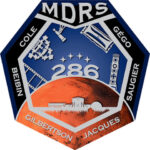
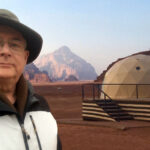
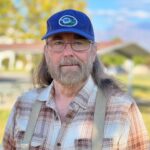
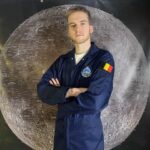
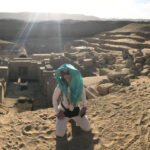
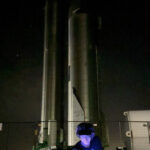
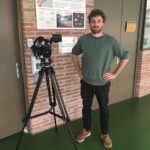
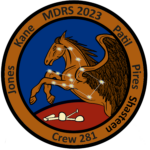
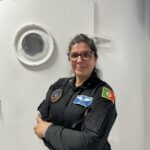
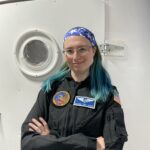
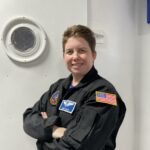
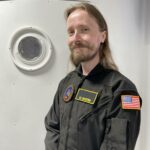
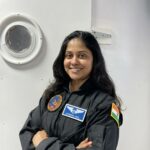
You must be logged in to post a comment.